
Lumpia is a beloved Filipino dish that brings joy to many gatherings. These crispy spring rolls are often filled with a variety of delicious ingredients, making them a versatile choice for any occasion. I will share some of the best lumpia recipes that will surely impress your family and friends.
Whether you prefer traditional flavors or a creative twist, there is a recipe for everyone. Each version of lumpia offers a unique taste experience that highlights the rich culinary heritage of the Philippines. I believe these eight recipes will help you discover new ways to enjoy this classic dish.
1. Classic Pork Lumpia
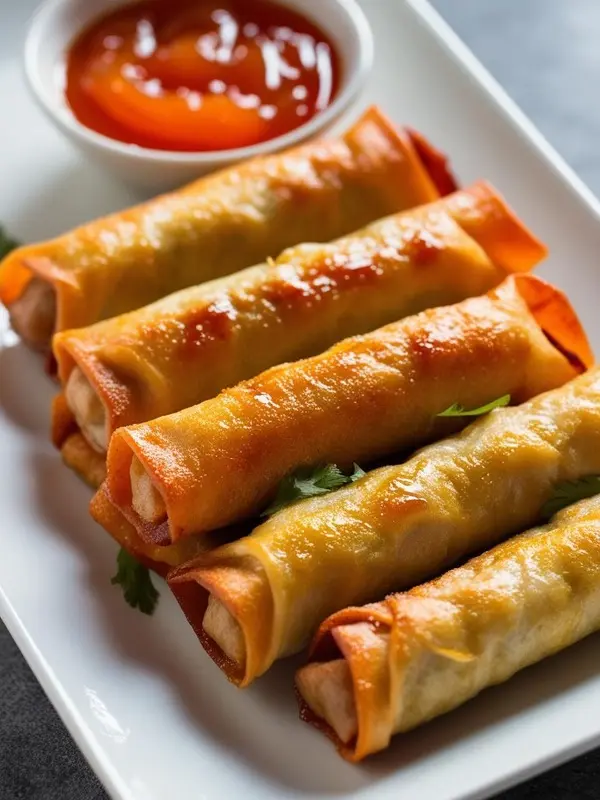
Classic Pork Lumpia is a popular Filipino dish. It consists of ground pork mixed with vegetables, all wrapped in a thin pastry. These spring rolls are crispy on the outside and flavorful on the inside.
Making lumpia is quite easy. I can prepare them in under an hour. The ingredients are simple and include ground pork, carrots, and garlic.
Here are the steps I follow:
- Prepare the filling: In a bowl, I mix 1 pound of ground pork, 1 cup of finely chopped carrots, and 2 cloves of minced garlic.
- Wrap the filling: I take a spring roll wrapper, place a spoonful of the mixture in the center, and roll it tightly, sealing the edges with water.
- Fry the lumpia: In a pan, I heat oil over medium heat and fry the rolls for about 3-4 minutes on each side until golden brown.
I usually serve Classic Pork Lumpia with a sweet and sour dipping sauce, enhancing the flavor. It’s an easy and satisfying dish that I enjoy making for friends and family.
2. Chicken and Vegetable Lumpia
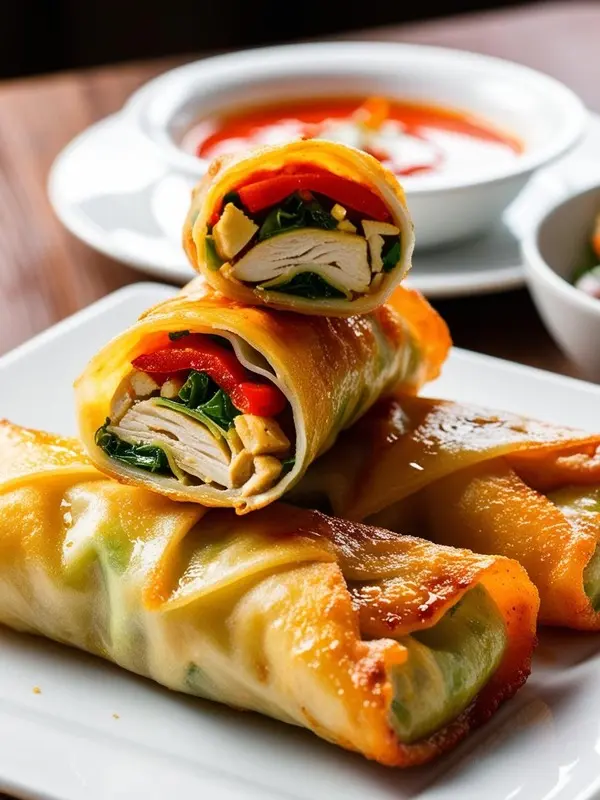
Chicken and vegetable lumpia are delicious Filipino spring rolls. They are filled with ground chicken, fresh vegetables, and seasonings. This dish is tasty and offers a nice crunch when fried.
Making lumpia is easy. I enjoy cooking them because they come together quickly. You’ll need lumpia wrappers, which I find in Asian grocery stores.
Here are the simple steps to make them:
- In a bowl, mix 1 cup of ground chicken, 1 cup of finely chopped vegetables (like carrots, cabbage, and green onions), 1 tablespoon of soy sauce, and salt and pepper to taste.
- Place a spoonful of the filling onto a lumpia wrapper.
- Roll it tightly, folding the sides in as you go.
- Seal the edge with a bit of water.
- Heat oil in a pan and fry the lumpia until golden brown, usually about 4-5 minutes.
I like serving them with a dipping sauce. They are perfect as appetizers or snacks. Enjoy the flavorful bite!
3. Shrimp and Tofu Lumpia
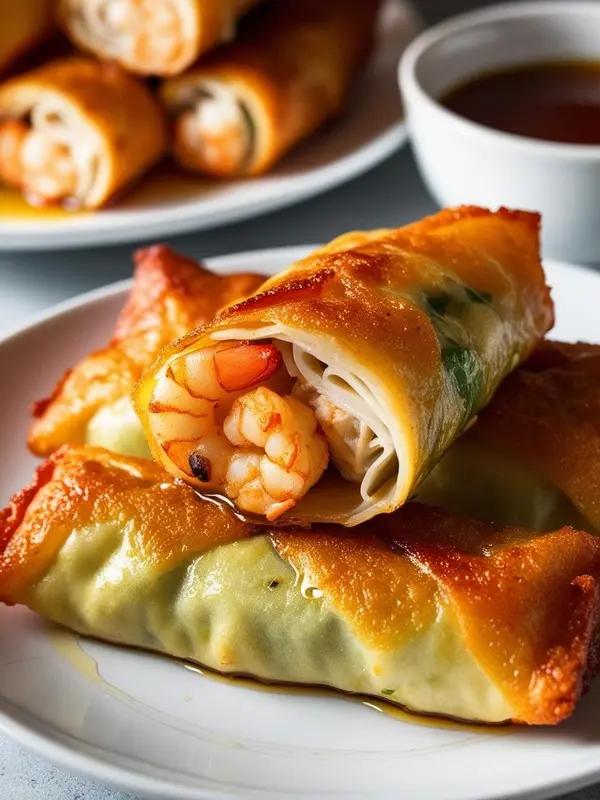
Shrimp and tofu lumpia is a delightful variation of traditional Filipino spring rolls. It combines the flavors of succulent shrimp with soft tofu, wrapped in a crispy shell. This dish is not only tasty but also easy to make.
To prepare shrimp and tofu lumpia, I first gather my ingredients: fresh shrimp, firm tofu, carrots, green onions, and lumpia wrappers. The process usually takes about 30 minutes.
- Start by peeling and deveining the shrimp. Chop them into small pieces.
- Dice the tofu and set it aside.
- In a pan, heat some oil and sauté the shrimp until they turn pink.
- Add the diced tofu and chopped vegetables, cooking for another 3-4 minutes.
- Season with salt and pepper to taste.
- Once the mixture has cooled, place a spoonful on a wrapper. Roll it tightly, sealing the edges with a bit of water.
- Finally, fry the lumpia in hot oil until golden brown, about 3-4 minutes per side.
These lumpia are best served with a dipping sauce, such as sweet and sour sauce or vinegar. They make a perfect appetizer or snack.
4. Beef and Carrot Lumpia
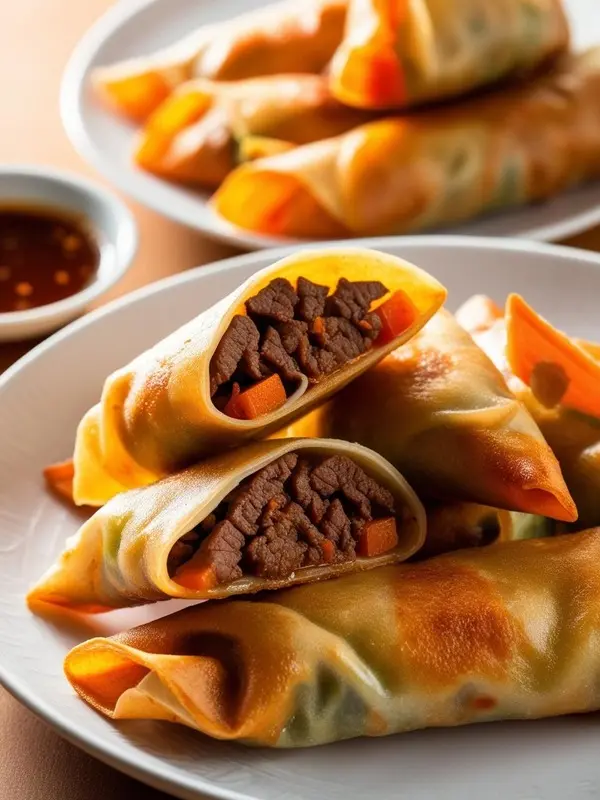
Beef and Carrot Lumpia is a delicious variation of the classic Filipino spring roll. It combines seasoned ground beef with tender carrots, all wrapped in a crispy shell. This dish is satisfying and easy to prepare.
Making Beef and Carrot Lumpia is straightforward. I find it a great option for both beginners and experienced cooks. The preparation usually takes about 30 minutes.
To make this dish, I follow these steps:
- Prepare the Filling: I sauté 1 pound of ground beef with 1 cup of finely chopped carrots, 1 onion, and 2 cloves of garlic. Season with salt, pepper, and a splash of soy sauce.
- Cool the Mixture: Once cooked, I let the filling cool down for a few minutes.
- Wrap the Lumpia: I take a lumpia wrapper, place a few tablespoons of the cooled mixture near one edge, and roll it tightly. I seal the edge with a little water.
- Fry the Rolls: In a deep pan, I heat oil and fry the rolls until golden brown, about 3-4 minutes each side.
- Serve: After frying, I let them drain on paper towels and serve with dipping sauce.
This dish is a crowd-pleaser at gatherings!
5. Vegetarian Mushroom Lumpia
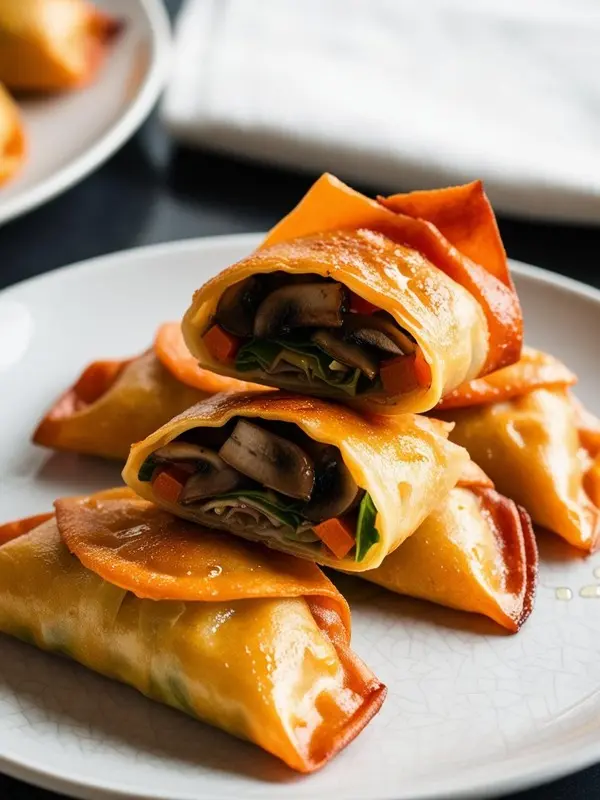
Vegetarian mushroom lumpia is a delicious twist on the traditional Filipino spring roll. It features mushrooms, which add a savory flavor and a meaty texture without using any animal products. This dish is easy to make and perfect for anyone looking for a vegetarian option.
To prepare, I gather my ingredients: lumpia wrappers, chopped mushrooms, cabbage, carrots, and seasonings. The process is straightforward and can be done in just a few steps.
- Prepare the filling: I sauté the mushrooms, cabbage, and carrots in a little oil. I season them with salt and pepper for taste.
- Wrap the lumpia: After the filling cools slightly, I spoon it onto the lumpia wrappers and roll them tightly. I seal the edges with a little water to hold them together.
- Cook the lumpia: I heat oil in a pan and fry the lumpia until they are golden brown and crispy, usually about 3-4 minutes on each side.
- Serve: Once cooked, I remove them from the oil and let them drain on paper towels. They are best served hot with a dipping sauce.
This recipe is great for snacks or appetizers and can be easily customized with different vegetables.
6. Lumpiang Sariwa
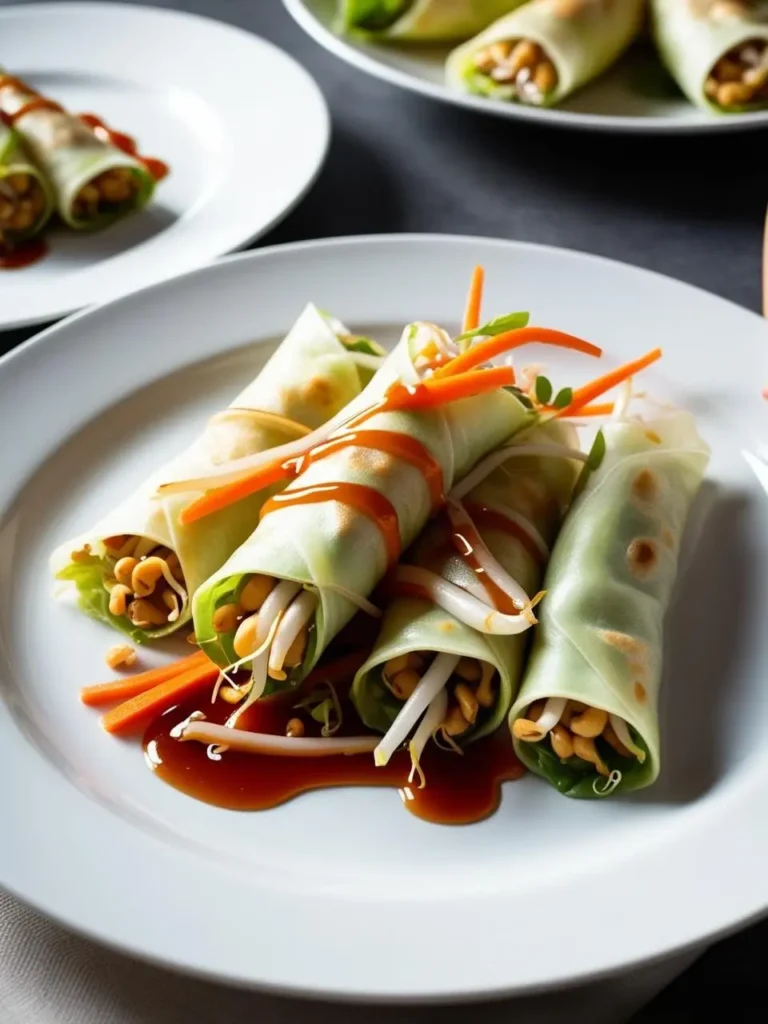
Lumpiang Sariwa is a fresh Filipino spring roll filled with vegetables. It’s often served with a sweet and savory sauce. This dish is healthy and colorful, making it a favorite for many.
I find lumpiang sariwa easy to make. The ingredients are simple and can be adjusted to my taste. It usually includes bean sprouts, carrots, and cabbage wrapped in a soft crepe-like shell.
To prepare lumpiang sariwa, I follow these steps:
- Make the filling: Sauté 2 cups of shredded vegetables in a pan until tender.
- Prepare the wrappers: I can use store-bought or make my own using flour, water, and eggs.
- Assemble: Place the filling on a wrapper and roll it tightly.
- Serve: Drizzle with a sweet sauce made from soy sauce and sugar.
This dish can be made in under 30 minutes, making it perfect for a quick meal. I enjoy it as a light lunch or an appetizer at gatherings.
7. Crispy Lumpia Shanghai
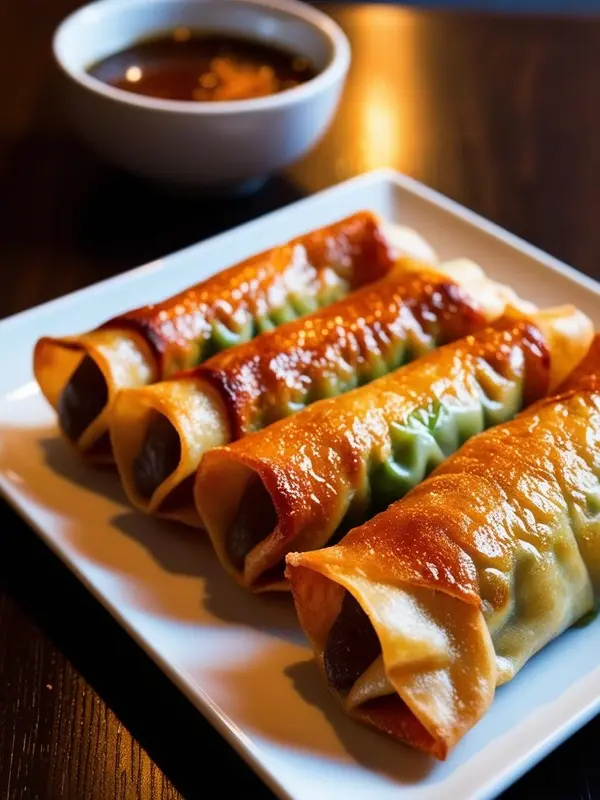
Crispy Lumpia Shanghai is a popular Filipino dish made of thin wrappers filled with a savory mixture. It typically includes ground pork, vegetables, and seasonings. These spring rolls are deep-fried until golden brown and crisp.
Making Lumpia Shanghai is easy and fun. I enjoy preparing this dish for gatherings. It takes about 30 minutes to prepare and 5-7 minutes to cook.
Here are the steps I follow:
- Prepare the filling: Mix 1 pound of ground pork, 1 cup of finely chopped carrots, 1 cup of minced green onions, 3 cloves of minced garlic, and 1 tablespoon of soy sauce in a bowl.
- Wrap the filling: Take a lumpia wrapper, place a spoonful of the mixture near one edge, and roll it tightly. Seal the edges with a little water.
- Heat the oil: In a deep pan, heat oil to about 350°F (175°C).
- Fry the lumpia: Carefully add the rolls in batches, frying them for 5-7 minutes or until they turn crispy and golden.
- Drain: Remove them from the oil and drain on paper towels.
Serve with vinegar or a sweet sauce for dipping.
8. Banana Turon Lumpia
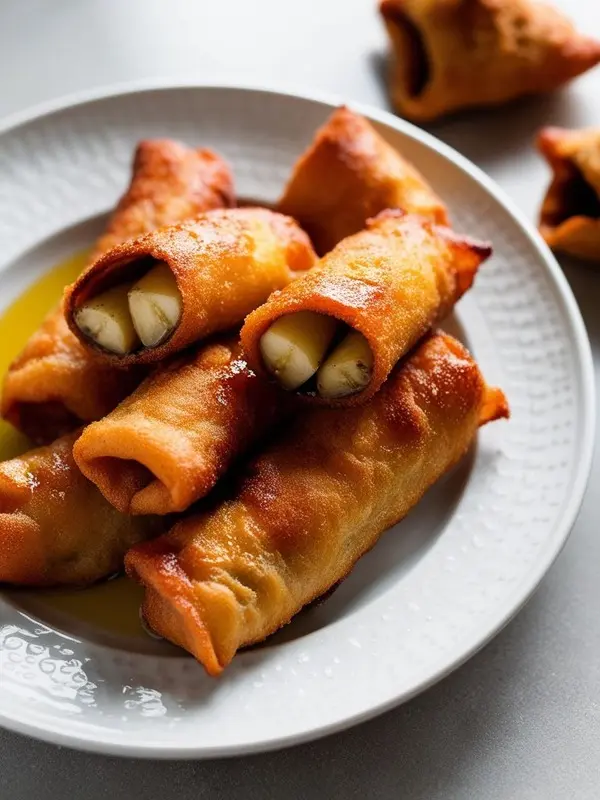
Banana Turon Lumpia is a popular Filipino snack that combines ripe bananas and caramelized sugar, all wrapped in a crispy lumpia shell. It is sweet, delicious, and easy to make.
To prepare this treat, I start with ripe saba bananas. These are a type of cooking banana that works best for this recipe. I also use lumpia wrappers and brown sugar for caramelization.
Making Banana Turon Lumpia is straightforward. Here are the steps I follow:
- Peel the bananas and slice them in half lengthwise.
- Roll each banana piece in brown sugar until coated.
- Place the coated banana in a lumpia wrapper, folding it securely.
- Heat oil in a pan over medium heat.
- Fry the wrapped bananas until golden brown and crispy, about 3 to 5 minutes.
I let them cool for a moment and then enjoy these crunchy, sweet treats. Banana Turon Lumpia can be a delightful dessert or snack at any time of the day.
What Is the History of Lumpia?
Lumpia is not only a delicious dish but also a reflection of cultural exchange and history. Its origins and changes over time reveal much about the culinary landscape.
What Are the Origins and Cultural Significance of Lumpia?
I learned that lumpia originated from the Chinese spring rolls, brought to the Philippines by Chinese immigrants. The word “lumpia” comes from the Hokkien dialect, where it means “thin pancake.”
In the Philippines, this dish quickly gained popularity. It became a staple at celebrations and family gatherings. Lumpia represents hospitality and community, making it a symbol of Filipino culture.
The filling varies, often featuring vegetables, meat, or seafood. Its adaptability makes it beloved by many. Lumpia has transformed into a representation of Filipino identity, merging flavors and techniques across cultures.
How Has Lumpia Evolved Over Time?
Over the years, I have noticed that lumpia has changed significantly. Different regions in the Philippines have their own unique versions. For instance, “lumpiang shanghai” contains ground pork and is often served with a sweet dipping sauce.
The dish also made its way to the United States, where it has been embraced by various communities. In Filipino-American households, variations can include unique ingredients.
Modern recipes often reflect creativity, combining traditional elements with local tastes. This innovation ensures that lumpia remains relevant and cherished. As I explore different recipes, I see how its history continues to evolve while retaining its roots.
What Are the Essential Ingredients for Lumpia?
Lumpia is a delightful dish that combines fresh ingredients and unique flavors. By understanding the essential components, I can create delicious lumpia that honors tradition while also considering modern adaptations.
What Are the Traditional Components of Lumpia?
The base for traditional lumpia is the wrapper, which is typically made from flour and water. It is thin and pliable, allowing it to crisp up when fried. I find that using spring roll wrappers or lumpia wrappers works best, as they keep the filling secure.
For the filling, ground pork or chicken is common. I also include vegetables like carrots, onions, and green beans for added texture and flavor. Garlic and soy sauce are essential for seasoning.
Finally, cane vinegar is often used as a dipping sauce. It adds a tangy contrast to the savory filling and crispy wrapper.
What Are Some Modern Twists on Lumpia?
In modern recipes, I like to experiment with various fillings. For example, using shrimp or even tofu caters to different dietary preferences.
I often try incorporating global flavors. For instance, adding spices like curry powder or jalapeños can give a unique kick.
Instead of deep frying, I may opt for baking or air frying to create a healthier version. Also, experimenting with sauces, such as sweet chili or sriracha, can elevate the dish.
These modern twists allow me to enjoy lumpia in diverse ways while staying true to its roots.
